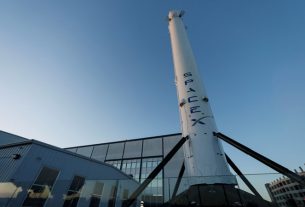The Instituto de Astrofisica de Canarias (IAC), was leading the development and implementation of a novel numerical procedure to replicate the intergalactic medium from a cosmological simulation that involved 100,000 hrs. of computing with machine-learning techniques and big data. This algorithm, Hydro-BAM was used by researchers to discover the hierarchy between dark matter, intergalactic neutral hydro and ionized gases. These are the ingredients that make up our large-scale universe.
This research produced the Lyman-alpha forest pattern, which is caused by the light emitted from distant galaxies and quassiers being absorbed by hydrogen gas clouds along their path. These forests are fundamental for understanding the universe in its entirety. Two papers have been published in ‘The Astrophysical Journal’.
According to current observations, dark energy and dark matter dominate all of the universe. They are more common than baryonic or conventional matter. Only five percent of the universe’s mass is made up of baryonic matter. Dark matter, however, makes up twenty-seven percent of the universe. Dark energy makes up 68% of the remaining universe. It is responsible for both the universe’s constant acceleration and expansion.
The standard version of the cosmological model has its assumptions that the interaction of these ingredients is what determines the structure of the universe at its largest scales. These processes are being modelled using the latest state-of-the-art numerical simulations. There are still many uncertainties.
Scientists need large numbers of simulations to make reliable predictions. These simulations must cover large amounts of cosmological volumes and be based on multiple models that incorporate all physical processes that are relevant. These virtual universes serve as testbeds for studying cosmology. The simulations are computationally costly and can only cover small volumes of cosmic matter compared to what is covered by future and existing observational campaigns.
AI and Big Data to decode the Universe
Francisco-Shu Kitaura (Instituto de Astrofisica de Canarias) and Kentaro Nagamine (Osaka University) have collaborated to develop novel strategies that allow them to create fast and detailed computational models of the formation and evolution.
Francesco Sinigaglia is a Ph.D. student at both the University of La Laguna (Tenerife), Spain, and the IAC (Italy), and first author of both publications.
Hydro-BAM is a new algorithm that combines advanced concepts in probability theory, machine learning, and cosmology. It was developed by the IAC team. This algorithm is equivalent to hydrodynamic simulations that take around 100,000 hours over a supercomputer and produces precise predictions in a matter of tens or even hundreds of seconds. Francisco-Shu Kitaura (researcher at the IAC) says that the algorithm was about 100,000 coded lines. It is the result of efforts put in since many years by some researchers.
These studies are intended to improve our understanding about the large-scale structure and evolution of the cosmos over time. This is done by modeling and observing baryonic amounts. “Our methods are designed to reproduce the observations of the universe by analyzing the statistical links of different complexities, between three-dimensional dark matter distribution and visible matter, such as intergalactic gases or galaxies.
The cosmic forest is revealed by Gas tree
The researchers used this new computational method to address the link between the observed universe and the hydrodynamic simulations. “We performed an extensive post-processing analysis on our hydrodynamic simulations, by using millions of virtual observers for the Lyman-alpha forests observed in the absorption quasar line of sight,” says Ikkoh Shimuzu. He was previously at Osaka University.
This is because hydrogen gas “trees”, scattered across the universe, absorb light emitted from distant objects. Scientists can thus see distinct absorption lines that correspond to clouds at different distances, thereby showing different ages and providing information about intergalactic medium.
Sinigaglia says, “The breakthrough was when we realized that the intergalactic connections between quantities of intergalactic gases, dark matter, and neutral hydrogen that were being modelled are well organized in hierarchical fashion.” Sinigaglia concludes that the ionized gases have a space distribution very similar to the dark matter. The distribution of neutral hydrogen and ionized gases gives us information about their thermal states and allows us predict the Lyman-alpha tree’s absorption flux.
Kitaura says, “Our papers in the field are having an enormous impact on scientists and we have been contacted worldwide-class groups.” Despite their success, they say that the research is only beginning. They plan to create thousands of simulated universes, including baryonic physics. This will allow for a thorough analysis of data from galaxy survey such as DESI and WEAVE-JPAS, and the Subaru PFS project. This research will enable scientists to do a unique analysis of large Lyman-alpha forests data sets. This will help us address possible tensions in cosmological models derived from different observational probes.

Jeffrey is acting editor in chief of AmazingNews24 with over seven years of experience in the field of online news under his belt. Jeffrey has worked with multiple media houses and is currently leading a team of journalists, sub-editors and writers through his entrepreneurial endeavours.


